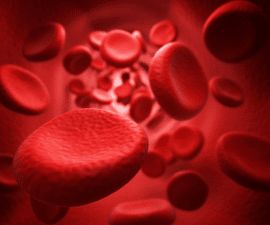Classes of Blood Cells

The blood is made up of blood cells in a liquid called plasma. Blood cells are made in the bone marrow. Bone marrow is the soft, spongy area inside most bones.
Three Main Classes of Blood Cells
Red blood cells (or erythrocytes): Red blood cells carry oxygen from the lungs to all the tissues in the body. Red blood cells also remove the carbon dioxide waste produced by cells and bring it to the lungs to be exhaled. A low number of red blood cells is called anemia. A person with anemia may feel tired, weak, and/or short of breath.
White blood cells (or leukocytes): White blood cells work as part of the immune system to help the body fight infections.
The main types of white blood cells are:
- Lymphocytes — These are discussed on the following page.
- Granulocytes — There are three types of granulocytes: neutrophils, basophils, and eosinophils. Neutrophils help fight bacterial infections. A low number of neutrophils in the blood is called neutropenia. People with neutropenia are more likely to get infections (mostly bacterial infections) than people with normal numbers of neutrophils. Basophils are cells that take part in inflammatory reactions. Eosinophils also help fight infections — particularly those caused by parasites — and they can become plentiful during allergic reactions.
- Monocytes — These also play an important role in immunity and are usually the first cells to recover after an episode of neutropenia.
Platelets (or thrombocytes): Platelets are cell fragments produced by cells in the bone marrow. They can stop bleeding from broken blood vessels by sticking together to form a blood clot. A low number of platelets is called thrombocytopenia. People with thrombocytopenia are more likely to bruise and bleed with minor trauma. They are also more likely to have severe and recurring nosebleeds and bleeding gums.
Because blood cells have a limited lifespan, the body needs to constantly replenish its supply of these cells. The average red blood cell lives for about 120 days; most white blood cells have a much shorter lifespan, ranging from a few hours to a few weeks. New blood cells are made by hematopoietic (blood-forming) stem cells, which are immature (non-specialized) cells that can develop into any kind of blood cell. Hematopoietic stem cells are found mainly in the bone marrow (the spongy, fatty material inside large bones such as the pelvis, vertebrae, and ribs).
Although, the white blood cells are the only class of blood cells that are a part of the immune system, it is important to understand that red blood cells and platelets play an important role in monitoring an individual’s health.
Download the Understanding the Immune System and Lymphoma Fact Sheet
Learn more about the body’s immune system, lymphoma and treatment impacts.
